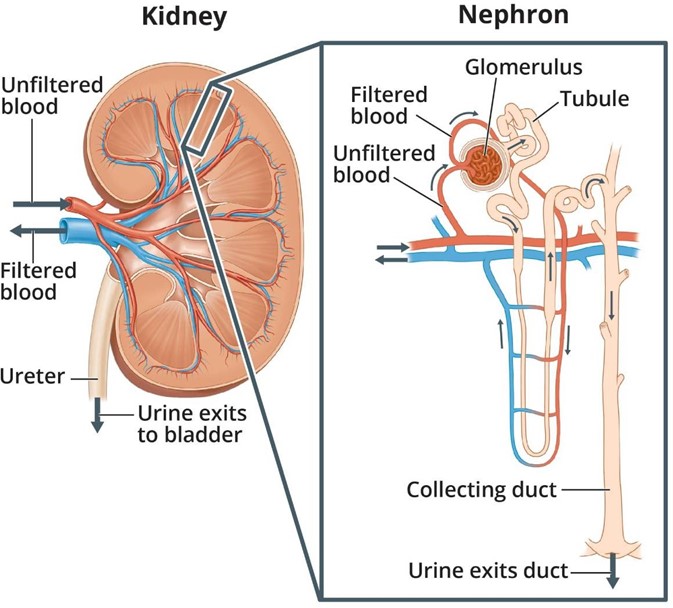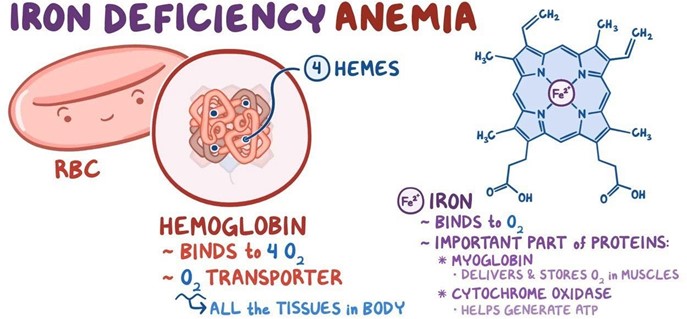A nurse is admitting a child who has leukemia. Which of the following clients should the nurse place in the same room with this child?
A child who has nephrotic syndrome
A child recovering from a ruptured appendix
A child who has rheumatic fever
A child who has cystic fibrosis
The Correct Answer is A
Choice A reason: This choice is correct because a child who has nephrotic syndrome is the most appropriate roommate for a child who has leukemia. Nephrotic syndrome is a kidney disorder that causes proteinuria, edema, hypoalbuminemia, and hyperlipidemia. It does not pose any risk of infection or injury to the child who has leukemia, and it does not require any isolation or special precautions. Therefore, placing these two children in the same room can help to conserve resources and promote socialization.
Choice B reason: This choice is incorrect because a child recovering from a ruptured appendix is not an appropriate roommate for a child who has leukemia. A ruptured appendix is a medical emergency that occurs when the appendix becomes inflamed and bursts, releasing bacteria and pus into the abdominal cavity. It may cause peritonitis, sepsis, or abscess formation, and it requires surgery and antibiotics. It may pose a risk of infection to a child who has leukemia, who has a weakened immune system due to chemotherapy or bone marrow suppression. Therefore, placing these two children in the same room can increase the chance of cross-contamination and complications.
Choice C reason: This choice is incorrect because a child who has rheumatic fever is not an appropriate roommate for a child who has leukemia. Rheumatic fever is an inflammatory disease that occurs as a complication of streptococcal infection, such as strep throat or scarlet fever. It may affect the heart, joints, skin, or nervous system, and it requires anti-inflammatory and antibiotic medications. It may pose a risk of infection to the child who has leukemia, who has a compromised immune system due to cancer or treatment. Therefore, placing these two children in the same room can increase the likelihood of transmission and infection.
Choice D reason: This choice is incorrect because a child who has cystic fibrosis is not an appropriate roommate for a child who has leukemia. Cystic fibrosis is a genetic disorder that affects the mucus glands of the lungs, pancreas, liver, intestines, and reproductive organs. It causes thick and sticky mucus to build up in the organs, leading to chronic lung infections, pancreatic insufficiency, malnutrition, and infertility. It requires respiratory therapy, enzyme supplements, nutritional support, and antibiotics. It may pose a risk of infection to the child who has leukemia, who has a reduced ability to fight germs due to malignancy or therapy. Therefore, placing these two children in the same room can increase the possibility of exposure and infection.

Nursing Test Bank
Naxlex Comprehensive Predictor Exams
Related Questions
Correct Answer is B
Explanation
Choice A: This information is incorrect, as the first dose of the diphtheria, tetanus, pertussis (DTaP) vaccine is usually given at 2 months of age, not 2 weeks. The DTaP vaccine protects against three serious bacterial diseases that can cause respiratory infections, nerve damage, or death. The DTaP vaccine is given in five doses at 2, 4, 6, 15 to 18 months, and 4 to 6 years of age.
Choice B: This information is correct, as the first dose of the hepatitis B vaccine is usually given within 24 hours of birth or prior to discharge from the hospital. The hepatitis B vaccine protects against a viral infection that can cause liver inflammation, cirrhosis, or cancer. The hepatitis B vaccine is given in three doses at birth, 1 to 2 months, and 6 to 18 months of age.
Choice C: This information is incorrect, as the first dose of the measles, mumps, rubella (MMR) vaccine is usually given at 12 to 15 months of age, not 6 months. The MMR vaccine protects against three viral diseases that can cause fever, rash, swelling of glands, or complications such as pneumonia, encephalitis, or deafness. The MMR vaccine is given in two doses at 12 to 15 months and 4 to 6 years of age.
Choice D: This information is incorrect, as the first dose of the pneumococcal conjugate (PCV13) vaccine is usually given at 2 months of age, not on the first birthday. The PCV13 vaccine protects against a bacterial infection that can cause pneumonia, meningitis, or sepsis. The PCV13 vaccine is given in four doses at 2, 4, 6, and 12 to 15 months of age.
Correct Answer is A
Explanation
Choice A: This instruction is correct, as iron supplements can cause a change in the color and consistency of stools, making them dark, green, or black. This is not a sign of bleeding or infection, but a normal side effect of iron therapy. The parents should be informed of this possibility and reassured that it is harmless.
Choice B: This instruction is incorrect, as iron supplements should not be administered at bedtime, but rather one hour before or two hours after meals. This is because iron absorption is reduced by food, especially dairy products, antacids, or calcium supplements. The parents should be instructed to give the medication on an empty stomach or with a small amount of food if it causes nausea.
Choice C: This instruction is incorrect, as iron supplements should not be given with milk, as milk contains calcium, which can interfere with iron absorption and reduce its effectiveness. The parents should be instructed to avoid giving milk or other dairy products within two hours of the medication.
Choice D: This instruction is incorrect, as iron supplements should not be administered at mealtimes, but rather one hour before or two hours after meals. This is because iron absorption is reduced by food, especially dairy products, antacids, or calcium supplements. The parents should be instructed to give the medication on an empty stomach or with a small amount of food if it causes nausea.

Whether you are a student looking to ace your exams or a practicing nurse seeking to enhance your expertise , our nursing education contents will empower you with the confidence and competence to make a difference in the lives of patients and become a respected leader in the healthcare field.
Visit Naxlex, invest in your future and unlock endless possibilities with our unparalleled nursing education contents today
Report Wrong Answer on the Current Question
Do you disagree with the answer? If yes, what is your expected answer? Explain.
Kindly be descriptive with the issue you are facing.
